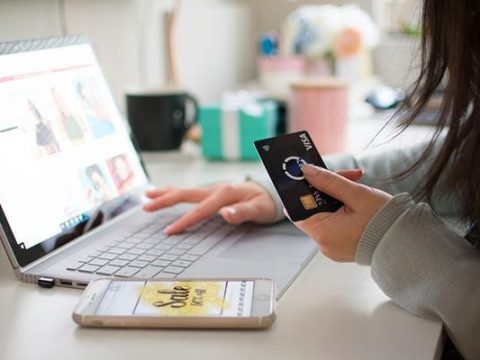
Everything Microsoft unveiled at its annual event.
October 27, 2022
An Unusual ransomeware attack on home PC’s, so beware!
October 27, 2022BACK IN SIXTH grade, I was a robot. Or at least, that’s what I told anyone who asked—in reality, my 11-year-old self was completely human. In 2018, I was diagnosed with osteosarcoma, a rare bone cancer that meant nine months of chemotherapy and too many surgeries to count. It was a year punctuated with hospital visits, needle pokes, and days when I felt too nauseated to even look at a plate of food.
And yet, my primary concern was that in my immunocompromised state, I was no longer able to attend school. The hospital was a meager substitute—most of the activities available were coloring books and plastic toys. It was nothing compared to the learning I craved. And the nurses and doctors, although lovely, only made me miss my friends—who often couldn’t visit—more.
I missed the most mundane things, from eating lunches in the crowded cafeteria to playing tic-tac-toe with my friends in the margins of notebooks. Even the most boring classes or the longest assemblies would’ve felt like a blessing. I had loved school before, but in the hospital, all I could think about was how I took it for granted.
Seeing my disappointment, the hospital loaned me a gift: a telepresence robot called the VGo.
The VGo was the best alternative to school I could have gotten. Like a video call on wheels, it attended my classes for me while I maneuvered it from an iPad at home or in the hospital. Not only could I go to class—I could attend clubs, talk to my teachers, and even eat lunch with my friends. I finished sixth grade and was back in person the next year.
My victory was short-lived. A year and a half later, the pandemic began, and it was back to virtual learning.
People often ask me how online classes compared to the VGo, and I can say with confidence that the VGo was light-years ahead of Zoom or Google Meet. Although connection issues and audio problems were prevalent in both, virtual classes were somehow more robotic than an actual robot.
One consolation I had, however, was that virtual classes made school accessible to those who remained in the hospital. Although Covid-19 was no friend to those with low immune systems, at least they could attend online school with their peers—telepresence robots were no longer needed for that.
But what happened when schools reopened again?
Chia-Chee Chiu is currently the head of middle school at St. John’s School in Houston. In 2018 she was my principal, and she was one of the main people who helped introduce the VGo to my school. Being no stranger to virtual learning when the pandemic started, she agreed that the VGo was a vast improvement from a simple video call.
“On Zoom, you’re stationary,” she says. “When class ends, class ends. But with a VGo, you were there virtually, moving from class to class, and your friends in the hallway could interact with you. They could interact with you in the class as well.”
That was the key; those interactions that I craved in the hospital were the same that many missed during the pandemic. The robot could provide that for me in a way that Zoom classes never could.
When asked about the potential of using telepresence robots following the pandemic, Chiu agrees that virtual classes have changed peoples’ perspectives. “I think people now understand that that’s a possibility that the VGo can be used. Once everyone understood it, of course, the teachers thought it was really helpful and they were grateful that you were able to stay connected between all the things that you needed to do with treatment.”
Chiu was not the only one to acknowledge the changes that Covid-19 has made to the world of telepresence robots. Simon Strauss, currently head technical support expert at Vecna, the company that designed the VGo, observed a difference as well.
“During the height of the pandemic, where everyone was going virtual, we did not see as much demand, simply because literally everyone was virtual,” he says. Following the reopening of schools, however, he saw an increased interest in the VGo—more people had opened their eyes to how technology could aid those under heavy medical restrictions, and how it improved virtual classes.
Of course, the VGo isn’t the only telepresence robot out there. Another alternative is the AV1 from the Norwegian company No Isolation. Unlike the VGo, however, the AV1 is placed on a desk, and it has no screen to view the patient on the other end.
Simon Ommundsen, an innovation director and former UX designer at No Isolation, explains to me why this choice was made.
“One of the first insights we had when we developed it was how uncomfortable it was for many children to be on display or have that pressure to put their camera on,” he says. “I think now, after the pandemic, a lot more people have sympathies with this pressure to put on a display.”
The comfort of the user seemed to be one of the primary concerns of the AV1’s design. Ommundsen went on to describe how the AV1 made sure that kids wouldn’t have to feel pressured to attend class. “If you’re not feeling well, if you need to disconnect for a while, if you’re in the hospital and something happened, you can just do so and reconnect without the teacher having to really do anything,” he said.
The AV1, according to Ommundsen, was meant to be customizable, in order to embody the patient attending as much as possible. “We received one back that was covered in black Sharpie. When requesting features, the user said they would love it if it had like a Darth Vader voice filter,” he says. I shared with him a similar experience with my robot, which was affectionately referred to as “G2O2.”
Strauss, too, mentions how the added benefit of telepresence robots is their ability to build relationships with others.
“I had a case where the school had a fire drill, and some of the kids were helping the kid on the VGo get in line as well,” he says. “And the teacher was like, ‘Why are you bringing the robot?’ and the kids responded like, ‘Because it’s Billy, everyone has to go out in a fire drill.’ It’s this factor of being treated like you are a person there. You wouldn’t get from just being a screen on a desk.”
Of course, that wasn’t to say the robots didn’t have issues. My school’s Wi-Fi was poor more often than not; my classmates quickly learned that they would have to carry the robot to and from the elevators when the connection inevitably cut out. The technology wasn’t easy to adjust to for me, either.
But learning how to use a telepresence robot isn’t too much of a jump from virtual classes—which both teachers and students have plenty of experience with nowadays. In fact, there are organizations that help to distribute robots, and even assist teachers in adjusting to the technology. My own robot was provided to me by the Valerie Fund, which provides care to patients in New Jersey, New York, and Philadelphia. Another company is Reggie’s Robots in Texas.
The pandemic didn’t just teach people how to use technology, however. Nearly everyone had to face the challenges that many patients face during their treatment—mainly, the distress of isolation. Virtual learning is over for most students, but now some patients, and immunocompromised students, are back at square one.
There’s a new understanding of the power of these robots. Covid-19 has given everyone the experience of feeling isolated—and for many, this technology is a solution that can keep them in class without falling behind, engaged with their friends and social lives, and most importantly, happy.
So maybe I wasn’t a robot in sixth grade. But they did make me feel less alone.
Source: https://www.wired.com/story/robots-education-sick-kids/




